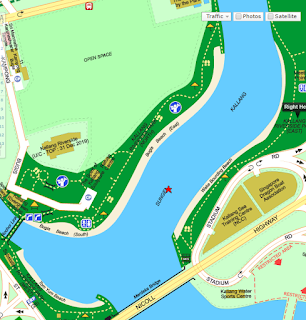DPSIR: Driving Forces
In the DPSIR framework, driving forces are changes in
society that exert pressure upon ecosystems that could possibly change the
state of the ecosystem. For example, an increase in the demand for wood
furniture would exert increased pressure upon the tree population in a forest.
If demand were to be large enough then its entirely possible for widespread
deforestation to occur.
Most of Singapore’s complex ecosystems are not usually
exploited for their resources besides water. The focus is instead on the
cultural, regulating and supporting services. Singapore society naturally
relies upon these services and oftentimes, trends and events affecting society
do have spill over effects on these services.
Take cultural services for example, cultural services focus
mainly on the non-material benefits that society derives from the ecosystem. One
example of a cultural service being affected by trends is the increasing
popularity of water sports. The increasing affluence of Singaporeans coupled
with wider exposure to sports has popularised several water sports such as
Dragon Boating in Singapore. As a result, more water bodies are being
designated for recreational use and many facilities tied to recreational water
sports are often incorporated into development plans for areas with large
bodies of water.
But not all trends develop slowly over time. Technology has
increased the pace of development and oftentimes creates events that lead to
shocks on the ecosystem. Take the recent release of Pokemon Go in Singapore for
example. Players turned out in huge numbers at previously unpopulated locations
with many of them staying for long periods of time. And with this crowd came
the usual issues with litter left behind and noise pollution. Many of the
Pokemon Go locations were tied to nature reserves and you can see why that
could have caused NParks, governing body of these reserves to be in quite a
pickle.
They eventually appealed to the game developer Niantic to
have these locations removed from the game to “avoid situations of Pokemon Go
players….causing damage to the environment”. This event highlights how simply
focusing on environmental conservation is insufficient due to the increased
possibility of outside events having a direct impact on ecosystems. Thus
traditional governance of ecosystems must evolve to be able to react to these
events rapidly and at the same time be aware that control of such ecosystems is
no longer as iron-clad as they used to be.
http://www.straitstimes.com/singapore/remove-pokestops-from-nature-reserves-nparks
Supporting services include the provision of habitats that
wildlife require in order to survive. In recent years, NParks has tried to
increase the overall biodiversity of Singapore. The return of the otters in
Marina Bay and the sighting of the Slow Loris in Bukit Timah all serve as signs
that efforts in increasing biodiversity are yielding some results.
There has also been increased public interest in the nature
reserve due to increased biodiversity. As a result, more Singaporeans have been
embarking upon eco-tours; tours meant to provide participants an immersive
experience into nature. The increased interest is a driving force behind the
increased visitorship of nature reserves. Such increased visitorship no doubt
creates pressure upon the ecosystem as they may not be able to adapt to the
increased human presence. Again, there is a need for governance to ensure the
ecosystems are kept in balance.
http://www.straitstimes.com/uncategorized/nature-beckons

















